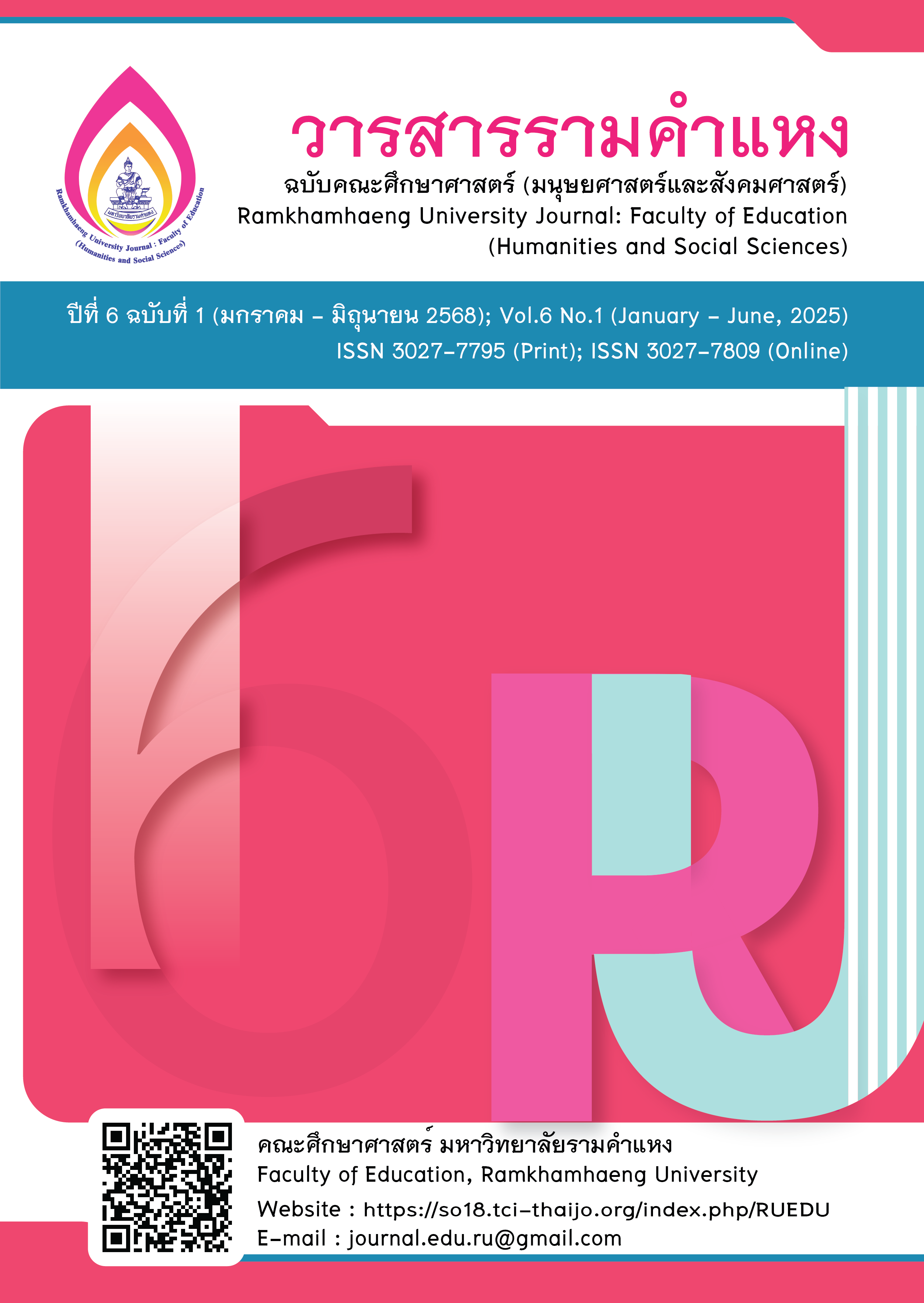Development of the Attention Skills of Kindergarten Year 2/1 Children through Creative Arts Activities
Main Article Content
Abstract
The study aimed to 1) develop the attention skills of kindergarten children, and 2) compare the attention skills of these children before and after their participation in creative arts activities. The sample consisted of 20 boys and girls, aged 4 to 5, who were enrolled in Kindergarten Year 2/1 during the second semester of the 2022 academic year at the Loei Rajabhat University Demonstration School. The participants were selected using a purposive sampling method. The research incorporated an experiential teaching plan that included creative arts activities and assessment forms to assess the impact of these activities on the preschoolers' attention skills. Data analysis encompassed calculating percentages, averages, standard deviations, and performing a dependent t-test
The findings revealed that 1) children had moderate attention skills before their involvement in creative arts activities. However, their attention skills reached the highest level after participating in these activities. (2) When comparing the average scores of attention skills before and after participating in creative arts activities, the scores were found to be 7.68 and 17.88, respectively. Furthermore, a statistically significant difference was noted when comparing the scores before and after engaging in creative arts activities at a significance level of .05.
Downloads
Article Details

This work is licensed under a Creative Commons Attribution-NonCommercial-NoDerivatives 4.0 International License.
ผู้ส่งบทความ (และคณะผู้วิจัยทุกคน) ตระหนักและปฎิบัติตามจริยธรรมการวิจัยอย่างเคร่งครัด ทั้งนี้บทความ เนื้อหา ข้อมูล ข้อความ ภาพ ตาราง แผนภาพ แผนผัง หรือข้อคิดเห็นใดๆ ที่ปรากฎในบทความ เป็นความคิดเห็นและความรับผิดชอบของผู้ส่งบทความ กองบรรณาธิการไม่จำเป็นต้องเห็นตามเสมอไป และไม่มีส่วนรับผิดชอบใดๆ โดยถือเป็นความรับผิดของของเจ้าของบทความเพียงผู้เดียว
References
Detakupta, Y. (1999). Educational arrangements for early childhood children. Bangkok: AP Graphic Design. (in Thai)
Hanmethee, S. (2016). Developing EF brain skills in reading. Bangkok: Idol Company. (in Thai)
Ministry of Education. (2017). Early childhood curriculum B.E. 2560 [A.D. 2017]. Retrieved from https://academic.obec.go.th/images/document/1572317446_d_1.pdf (in Thai)
Nuanchan, W. (1996). Effects of organizing creative art activities with additional works on the creativity of early childhood children. [Master thesis, Srinakharinwirot University]. (in Thai)
Palitpholkanphim, P. (2018). How to raise children to have EF. Bangkok: Phraeng Publishing House. (in Thai)
Plagen, C. M. (2004). The healing art of children: An integration of art therapy and bioenergetics education with an ADHD child. [Master thesis, Ursuline College]
Songsang, J. (2016). Effects of using integrated art activities on problem-solving ability of early-childhood children. [Master thesis, Srinakharinwirot University]. (in Thai)
Susarat, P (2008). Thinking development. Bangkok: 9119 Technic Printing. (in Thai)
Wetwichanun, W., & Chanwirat, W. (2019). The Use of Art Activity Develop Attention on Work of Children with Learning Disabilities and ADHD. Ratchaphruek Journal, 17(2), 88-94. in Thai)

